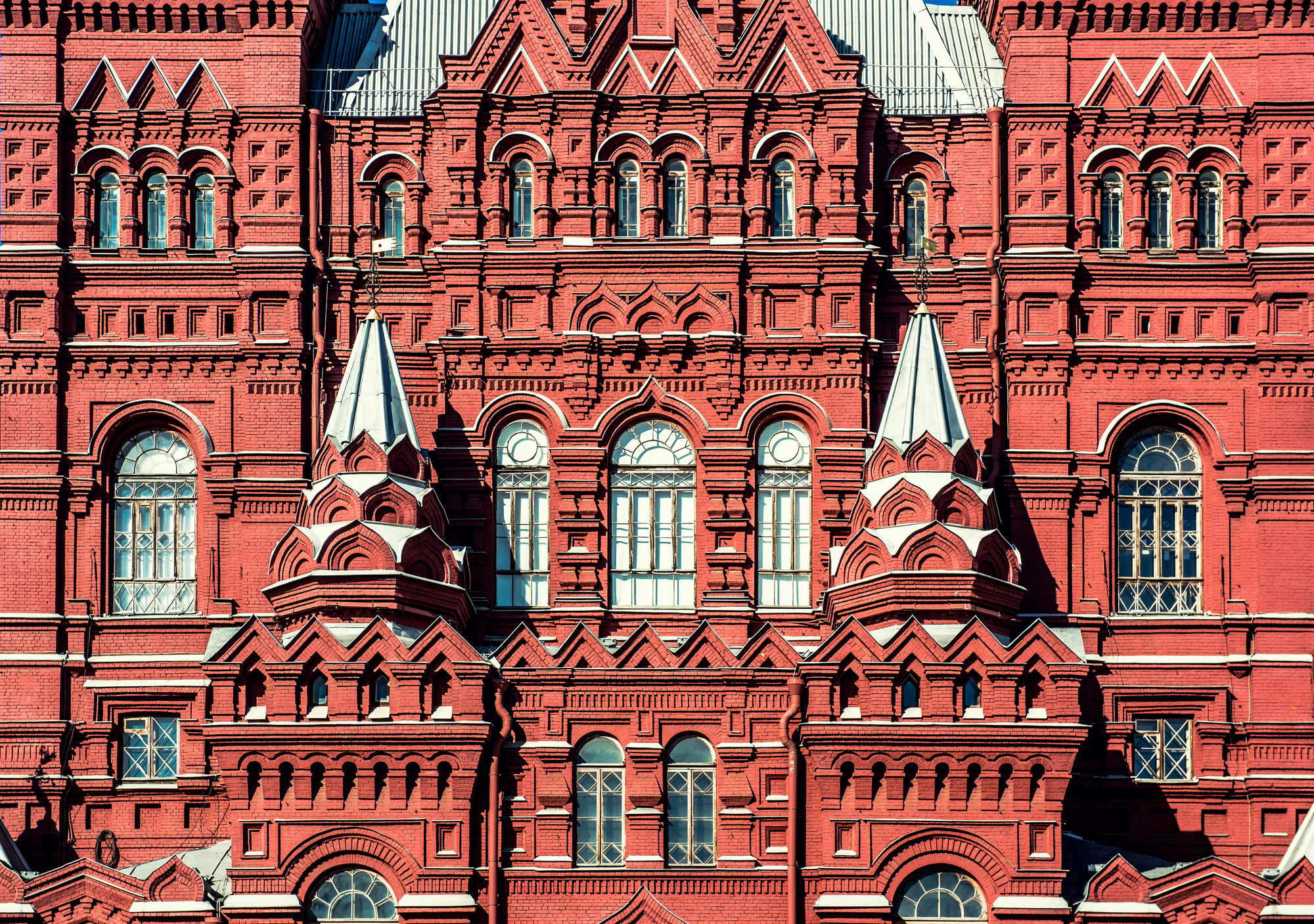“The Court is of course aware that the systematic terror applied to consolidate communist rule in several countries […] remains a serious scar in the mind and heart of Europe. It accepts that the display of a symbol which was ubiquitous during the reign of those regimes may create uneasiness among past victims and their relatives, who may rightly find such displays disrespectful. It nevertheless considers that such sentiments, however understandable, cannot alone set the limits of freedom of expression. […] A legal system which applies restrictions on human rights in order to satisfy the dictates of public feeling – real or imaginary – cannot be regarded as meeting the pressing social needs recognised in a democratic society, since that society must remain reasonable in its judgement. To hold otherwise would mean that freedom of speech and opinion is subjected to the heckler’s veto.”
Vajnai v Hungary (no.33629/06, § 57, ECHR, 2008)
Introduction
The reaction of publicity to Ukrainian ban on Communist and Nazi Propaganda varied from saluting to disapproving and labeling the bill as populist and untimely. Leaving aside the question about expedience of the ban, the new legislation is highly controversial.
It is understandable that the government makes fair attempt to be responsive to social demand. There is evident growing demand to dump Soviet legacy as unnecessary ballast and move on with reforms plan. Nevertheless, the government should keep in mind that response to this demand should have adequate limits. While a decision to open KGB archives deserves applause, the ban on communist and national–socialist symbols is surprisingly half-baked. With the extensive state practice in this realm, Ukrainian government could have learnt a lesson from our neighbors in order to set a proper balance between strife to abandon gruesome historical past and secure the fulfillment of citizens’ rights. Unfortunately, it failed to do so, since the adopted ban is clearly overbroad and raises numerous questions to its legality and reasonableness.
Ukrainian Ban
On April 9 Ukrainian Parliament by 254 votes out of 450 passed the Law condemning communist and national-socialist totalitarian regimes and prohibiting “propaganda of their symbols”. The text of the law starts with a long overture laying out the purpose of the bill and listing numerous national and international acts endorsing the aim of dismantling the heritage of former communist totalitarian systems. The definition list suggests interpretation of five key terms, including “propaganda of communist and national-socialist totalitarian regimes” and “symbols” for each of those regimes. The “propaganda” is interpreted as any “public denial of the criminal nature” of the Soviet or Nazi regimes in Ukraine, along with wide definition of “symbols”, which includes flags, any insignia (their elements or combinations), imagery, anthems, slogans and quotes, monuments, memorials, street/city names affiliated with the Soviet Union or Nazi Germany. The exceptions from sweeping ban on communist and Nazi propaganda are educational or research activities, provided that they do not aim to question the criminal nature of regimes; private collecting of such symbols; and use of these symbols at memorial parks or burying grounds. This bill amends several other legislative acts, including Criminal Code of Ukraine. An explanatory note to the draft law also suggested that bill does not require public discussion.
The Central Experts Directorate in its opinion on the draft law stressed on the several conflicting provisions. Firstly, the scope of the law is not subject to statutory regulation: it falls within the constitutional domain. For instance, restricting the principle of the political and ideological pluralism, changing an exhaustive list of requirements for candidates running for parliamentary/presidential elections should be conducted through the constitutional amendment procedures only. Similarly, Article 37 of Ukrainian Constitution provides that constraining/prohibiting activity of citizens’ associations (including political parties) is subject to judicial review only, and thus may not be ordered by the act of Parliament. Moreover, the suggested text of the Article 436-1 of the Criminal Code has been labeled “doubtful and ill-grounded”. Firstly, the title of this article does not correspond its substance: while the title prohibits “propaganda” of the Soviet or Nazi regimes, the text establishes liability for production/distribution of insignia only. Since “propaganda” is a broader term, it is unclear which actions carry criminal penalty. The second concern has been raised with regards to disproportionality of such penalty to the committed crime: production/distribution of insignia or public performance of the Soviet anthem should not qualify as a felony since this action does not directly endanger citizens’ life or integrity.
State practice
Although international community unanimously condemned the National Socialist regime, there is no consistency among states in prohibiting Nazi symbols. The practice of banning symbols as such is rare since it commonly diverges from the concept of the freedom of expression.
The US practice represents the extreme example of this approach. In American legal framework one of the fundamental principles is equal protection of all ideas (even the most radical messages) under the First Amendment. In 1977 Illinois Supreme Court (following the of order of the US Supreme Court to hold a second hearing in a case of Smith v. Collin) upheld the right of neo-Nazis to march through the town of Skokie, Illinois, predominantly Jewish community (one in six residents was a Holocaust survivor). Under US case law the governmental prohibition of certain content is justified only if this content constitutes an “imminent danger of a grave substantive evil,” which is not the case with e.g. public demonstration of swastika.
Examples of another extreme are general bans on Nazi symbols introduced in Germany and Austria. Sections 1 and 2 of Austrian Insignia Act (Abzeichengesetz 1960) outlaws public wearing, display, depiction or dissemination of insignia of organizations prohibited in Austria under Section 12.1 of Association Act (Vereinsgesetz). Similarly, Section 86(a) of the German Criminal Code outlaws “use of symbols of unconstitutional organizations”, including distribution or public use of Nazi flags, insignia, uniforms, slogans and forms of greeting. Although there is no exhaustive list of the prohibited symbols, the Federal Office for the Protection of the Constitution has published the study on interpretation of the section 86(a), outlining relevant case law and the list of symbols, signs, individual decisions falling under the prohibition, as well as the list of organizations banned under section 3 of the Act on Associations.
In 2005, in reaction to Germany’s proposal in the European Parliament to adopt an anti-racist regulation banning the use of Nazi symbols in the EU, representatives of 4 post-communist countries (Czech Republic, Hungary, Lithuania, Slovakia) suggested that this ban should also cover communist symbols. However, the European Commission rejected this offer for a number of reasons. It expressed concerns about potential infringement on civil liberties; the lack of consent among states regarding the list of concrete symbols that should be banned. It also noted that this issue should not be resolved while designing a framework on combating racism, but should rather be left to the discretion of national governments. Similar failed effort to ban communist attributes has been made in 2010 by the foreign ministers of Bulgaria, the Czech Republic, Hungary, Latvia, Lithuania and Romania. Although in 2009 the European Parliament passed Resolution condemning all totalitarian and undemocratic regimes, this statement had no rules regarding the use of their symbols. In the same year OSCE condemned Nazi and Stalinist totalitarian regimes and expressed concern at “the glorification of the totalitarian regimes, including the holding of public demonstrations […]”.
Several states in Central and Eastern Europe have adopted legislation prohibiting the use of communist symbols.

Article 269/B of the Hungarian Criminal Code outlaws dissemination, exhibiting or public use of “swastika, an SS-badge, an arrow-cross, a symbol of the hammer and sickle or a red star, or a symbol depicting any of them”. Such actions are classified as misdemeanor (unless a more serious crime is committed). Exceptions from this ban are educational, scientific activities or cases involving “the insignia of States which are in force.” The ban has been subject to constitutional review in 2000. Hungarian Constitutional Court has found that ban was lawful since it pursued a legitimate aim of “the prevention of acts endangering public peace and offending the dignity of the community” and thus was unavoidably necessary and proportionate to this objective. Relying on the margin of appreciation doctrine, the Court ruled that the ban was constitutional.
In 2008 this ban was challenged in the European Court of Human Rights (ECHR) in a case of Vajnai v Hungary. The applicant has been convicted for wearing a communist symbol during a public event and claimed that his conviction has been in breach of Article 10 (freedom of expression) of the Convention. The Court acknowledged that the ban was prescribed by law and followed legitimate aim, namely the prevention of public disorder. However, the ban failed to satisfy the requirement of “pressing social need” and, consequently, was not necessary. Such restriction might have been justified in case if there has been “a real and present danger of any political movement or party restoring the Communist dictatorship.” Additionally, the Court held that the contested ban was overly broad since the red star symbol has multiple meanings and the Court “cannot conclude that the applicant´s display was intended to justify or propagate totalitarian oppression”. Thus, ECHR concluded that the conviction of the applicant constituted an interference with the freedom of expression and violated Article 10 of the Convention. Under similar circumstances the ECHR has found violation of Article 10 in the case of Fratanoló v. Hungary (2011). In 2013 the Constitutional Court of Hungary repealed the ban. The detailed analysis of this litigation may be found here.
In Poland Article 13 of the Constitution proscribes political party’s aims and activities “based upon totalitarian methods and the modes of activity of Nazism, fascism and communism”. However, the ban on propaganda and public display/dissemination of the symbols associated with those regimes has been established under Article 286 of the Penal Code (1997). In 2011 this ban was challenged in the Constitutional Tribunal. In its decision the Tribunal relied on the ECHR decision in Vajnai v Hungary for an evaluation of Polish regulations and ruled that the use of symbols, which may be ambivalent in nature, should not be subject to penal liability.
Similar story happened with an attempt of Moldovan Parliament to impose the ban on the use of communist symbols in 2012. The introduced bill intended to amend three laws: the law on political parties, the code of contraventions and the law on freedom of expression. Subsequently, legality of this legislation has been challenged by a group of Moldovan Parliamentarians at the Constitutional Court. The President of the Constitutional Court requested Venice Commission to submit amicus curiae brief regarding the constitutionality of this ban. Venice Commission in its opinion concluded that the ban in question failed to meet requirements established under Articles 10 and 11 of the European Convention on Human Rights, in particular it has not been formulated with sufficient precision and has not been issued in response to “a pressing social need”. As a result, the Constitutional Court ruled that the Communist Party’s symbols (the hammer and sickle) are legal and can be used.
Conclusion
The ban on communist and national–socialist symbols is an interesting move in ideological confrontation between Ukraine and Russia. In response to repetitive labeling Ukrainian national-patriotic movement as “fascist” by Kremlin, Ukraine made an attempt to legally inscribe that national–socialism is tantamount to Soviet communism, praised in contemporary Russia. However, in order to make this move elegant and efficient, this law must satisfy the high threshold established by European institutions. In addition to criticism expressed by Central Experts Directorate, there is a need to hold a public discussion concerning re-naming of administrative units. Without such discussion the application of any law of such kind would be futile: a desire to abandon Soviet past must come with understanding of the reasons behind it, not just fear of sanctions. This profound understanding of country’s history was probably the reason why there has been no substantial resistance to the similar bans in Latvia and Lithuania (one should also note that e.g. in Lithuania breakup with Soviet monuments has never been as reckless as in Ukraine). Considering that Ukrainian newly introduced ban is broader than the Moldovan analog (limited to activity of political parties only) and has similar scope with Hungarian one, it is evident that law should be considerably revised and narrowed to satisfy human rights standards. A legislator should also keep in mind that primary aim of such legislation should be preventing the repetition of the crimes committed by totalitarian regimes, not merely emotional desire to intercept Ukraine’s habit to relate country’s present to Soviet past.
Attention
The author doesn`t work for, consult to, own shares in or receive funding from any company or organization that would benefit from this article, and have no relevant affiliations



